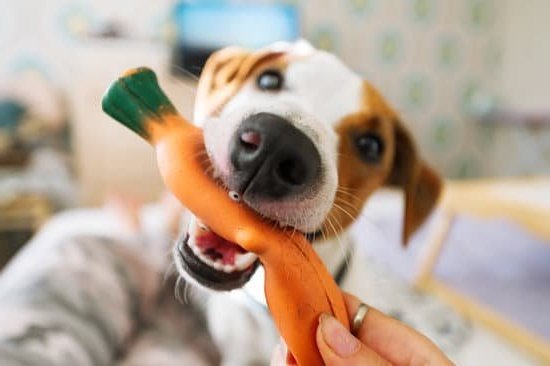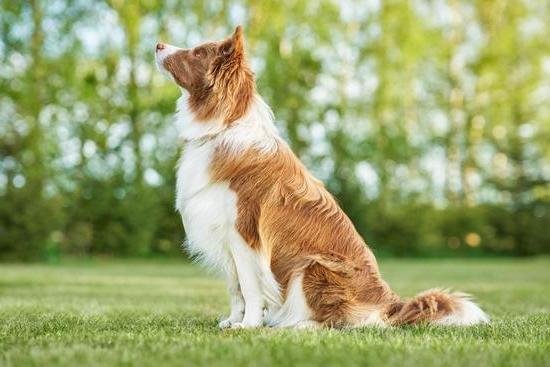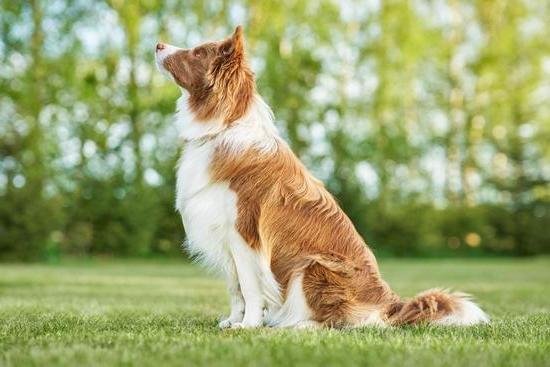Introduction
Leash training is an important skill for dogs to have. It provides safety, clarity and consistency in the communication between a dog and its owner, while allowing them to spend more time together in public places. Training your dog with a leash can be challenging at first but with consistent practice, your pup will soon learn good behaviour during walks.
The key to successful leash training is ensuring that it’s positive, respectful, and reinforced properly. To start off with, find a quality leash and harness that fits comfortably on your pet. Having the right equipment makes all the difference as it’s easier to remain consistent when handling the leash. Until your pup understands the basics, it is best to start using a 4-6 foot long leash so that you don’t need to rely on physical force nor give frequent corrections.
When beginning leash training with your dog, use reward-based instruction such as treats, praise or playtime to motivate them when they listen to commands. Whenever you offer verbal commands be sure that your tone of voice is clear and firm; this will help keep their attention on you and not wandering towards distractions like cats or other dogs. Over time try to test them by taking them on walks where there are more temptations around and offering rewards when they follow through despite these triggers.
Leash walking can be a challenge at first but with proper guidance and repetition of commands such as “heel” or “slow down” along with positive reinforcement like treats or an extra bit of playtime once the walk has been completed successfully – eventually you’ll get there! Practice patience throughout this process as correct behavior may not manifest immediately – but perfectly executed leash walking is attainable! Keep up consistent training sessions regularly until they have mastered all of the necessary basics – following instructions accurately while safely maximising outdoor activity time together!
Important Supplies to Have On Hand for Leash Training
When leash training your dog, the most important thing to have is a quality collar and leash. It’s best to choose a collar that can be easily adjusted and is comfortable for the dog to wear. Regular nylon leashes are ideal for most situations as they provide enough slack while still giving you control over your pet. If you’re planning on using the leash outdoors, it may also be helpful to invest in a retractable one. Additionally, having some treats on hand can come in handy when training; small pieces of kibble or cheese cubes work well for this purpose. As for feedback, voice commands such as “sit” or “stay” are great tools for getting your pup to follow instructions. For those difficult moments when walking with your dog is especially challenging, it may be beneficial to keep a few distraction toys around, like small stuffed animals or squeaky balls, which could help keep his attention off other objects he may want to interact with along the way. Finally, of course, always remember that working through leash training takes time and patience; if done correctly and consistently it will pay off in no time!
Making a Positive Connection Through Rewards and Fun
Training your dog with a leash is an important step in being a responsible pet owner, and is easily achievable through positive reinforcement. Start by associating the leash with rewards rather than punishments, as this will help to create a positive bond between you and your pup. Whenever they successfully follow commands while on the leash, give them praise and treats as rewards. You should also make sure that their walks are fun and engaging; take them on different routes and maybe play with them in the parks or at beaches along your way. This way, your pup learns that it’s enjoyable to be out for walks with you, even when connected by the leash. As things progress, challenge your dog to remain focused by switching up their route or taking them to unfamiliar environments such as puppy classes where they’ll learn valuable lessons from other pets. Consistency is key – make sure you repeat these steps often enough so that your pup retains what they’ve learned over time!
Introducing a Leash to Your Dog Safely
It’s important to introduce a leash to your dog in a gradual and calm manner. When attaching the leash for the first time, it’s important you spend some time choosing an appropriate collar or harness that is comfortable for your pet. Make sure nothing is too tight or too loose, otherwise fabric or other materials from clothes, collars or harnesses can cause chafing and discomfort if they fit poorly.
Once you have chosen the correct collar, attach the lead so that your dog feels secure but also doesn’t experience any discomfort. Your dog may be initially unsure of what is happening as you place the collar on and this can be understandably stressful for them. Speak to your little one in a friendly, comforting tone – these positive reinforcements will help during any situation, so make sure you encourage good behaviour when possible. When introducing a new item such as a leash it may take some time before your pet adjusts to it, this period needs patience from both of you.
Additionally, once the leash is attached to their collar or harness take short trips with them around your home and garden environment first. This is done with the intention of helping them get used to the feeling and sensation of being on the leash; staying close by helps create a safe – familiar space in which they feel supported and confident with their new accessory. If at any point during these trips they start getting antsy or uncomfortable reward them promptly with plenty of verbal praise!
Taking a Leash Training Stroll Together
Taking a leash training stroll together begins with the right equipment. Choose a leash that is comfortable for both you and your dog and matches the size of your pup’s neck and body. Take time to practice with the leash while your dog is playing or just casually wandering around in the house. Make sure it’s not too tight, not too loose – and reward them for allowing the leash to stay attached!
When you are ready to take the first walk, let your dog sniff the area and get a feel for their surroundings. Start by motivating them with delicious treats for simply walking beside you or checking in often so your pup doesn’t get overwhelmed or distracted by smells or other animals on the street. Try gradually extending your walking routes, as well as changing up the route every few days, this will help keep learning fun for your pup! Keep all walks positive by rewarding good behaviour with compliments, treats, and/or playtime. If they happen to pull on their lead, stop dead in your tracks until they loosen their grip before continuing – repetition will help them remember who is in control. With patience & consistency comes success; within no time you will be taking pooch strolling in proper unison!
Increasing the Length of Walks Gradually
When you train your dog with a leash, it is important to increase the length of the walks gradually. Start off with short walks around your yard or a nearby park that is fenced in. As your pet gets used to adapting to walks while being on the leash, extend the length of the walk. This can be done by taking them around more areas such as sidewalks, trails, and neighborhoods at less distracting times of day. You may also want to use reward-based exercises during your walks like sit/stay commands and increasingly challenging tricks. Adding these activities will help your pup learn how to stay focused while on a leash and keep him from being too distracted by his environment or other animals. As you begin to extend the length of walks, start inside first and then move outside. To make sure that the dog can stay focused while walking outdoors, practice inside first until they get accustomed to following commands on a leash before going out in public. Additionally, make sure that you practice in low distraction areas such as parks or on quiet streets where there won’t be many people or other animals present at first as this will keep your pet better focus when you move onto more challenging areas with more distractions present.
Coping With Leash-Pulling Behavior
One of the most important things when learning how to train your dog with a leash is managing leash-pulling behavior. Initially, your dog may not understand why it needs to stay by your side and instead want to explore freely. To help your pup learn better leash walking, try using a no-pull harness or double-ended training lead. The main goal is to ensure your pup doesn’t feel the urge to pull or walk faster than you due to its restricted area. When they begin pulling, it’s important that you don’t reinforce this behavior by tugging back on the leash – instead, stay still and wait until they stop pulling on their own. If they continue, simply turn around and head back in the opposite direction each time as reinforcement that they should remain by your side. Additionally, make sure to reward them during these walks with treats or verbal praise when they come back after going ahead slightly which will further encourage them to stay focused and not stray too far for temptation. With consistent training, proper equipment, and patience, teaching your pup appropriate leash behavior will become much more manageable over time!
Solving Potty Training Issues
To help solve potty training issues, take your dog out consistently. If a puppy mistakenly uses the bathroom indoors, immediately remove him from the area and bring him to his designated spot outside. Try to take him out first thing in the morning, after meals, and before bedtime. Offer lots of praise and reward after he successfully does his business outside. Be consistent and patient with your training efforts. If the problem persists for more than two weeks, consider consulting an experienced trainer or vet for help.
Keeping Leash Training Fresh After Mastery
Once your dog has mastered the basics of leash training—walking nicely on a loose lead, responding to commands, and behaving appropriately in public or around other people or animals—it’s important to keep their leash-based education fresh. You should try incorporating new activities, being in new places, and even introducing different methods into their routine. Here are some ideas:
1. Try Different Environments: A great way to test your pup’s leash training compliance is by taking them out of their comfort zone. Taking shorter walks around busy streets or parks can help them stay focused and attentive when there’s more going on around them. Performing advanced behaviors such as sitting politely at crosswalks can also benefit from this type of situation.
2. Vary Routines: Change up where you go, the times you walk them each day and exercise your dog’s mind with various commands and directions from time to time as well as different types of rewards for behavior like treats, belly rubs or extra outdoor play. Incorporating games in order to learn a new command can help keep it fun for both you and your pup!
3. Introduce New Hazards: When leashed-training it’s important to later introduce hazards such as skateboards or bicycles that mimic those encountered during everyday walks, so that they get used to the situations they will confront on their real world outing with their owners trustingly parked opposite!
Conclusion
When you have taken the time to gradually train your dog with a leash, you will be able to enjoy outdoor adventures together safely and responsibly. Your dog should respect the leash and only move in the direction that you direct them. A well-trained dog can explore new terrain without putting themselves or their owners in danger. With patience and practice, your relationship with your pet will be strengthened by actively participating in activities together. Take walks in the park or explore some nearby trails – it’s important to remember to stay safe wherever you go. Make sure to clean up after your pup regularly and always follow local laws for responsible pet ownership. With consistency and positive reinforcement, you will both enjoy sharing adventures outdoors.

Welcome to the blog! I am a professional dog trainer and have been working with dogs for many years. In this blog, I will be discussing various topics related to dog training, including tips, tricks, and advice. I hope you find this information helpful and informative. Thanks for reading!





